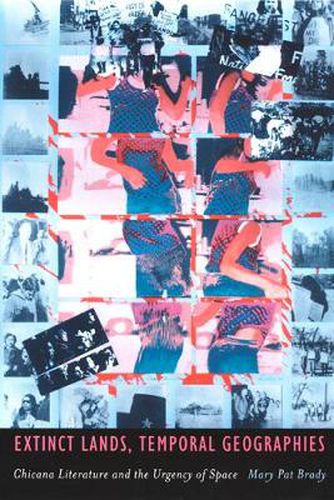Readings Newsletter
Become a Readings Member to make your shopping experience even easier.
Sign in or sign up for free!
You’re not far away from qualifying for FREE standard shipping within Australia
You’ve qualified for FREE standard shipping within Australia
The cart is loading…






A train station becomes a police station; lands held sacred by Apaches and Mexicanos are turned into commercial and residential zones; freeway construction hollows out a community; a rancho becomes a retirement community-these are the kinds of spatial transformations that concern Mary Pat Brady in Extinct Lands, Temporal Geographies, a book bringing together Chicana feminism, cultural geography, and literary theory to analyze an unusual mix of Chicana texts through the concept of space. Beginning with nineteenth-century short stories and essays and concluding with contemporary fiction, the book reveals how Chicana literature offers a valuable theoretics of space. The history of the Southwest in large part entails the transformation of lived, embodied space into zones of police surveillance, warehouse districts, highway interchanges, and shopping malls-a movement that Chicana writers have contested from its inception. Brady examines this long-standing engagement with space, first in the work of early newspaper essayists and fiction writers who opposed Anglo characterizations of Northern Sonora that were highly detrimental to Mexican Americans; then in the work of authors who explore border crossing. Through the writing of Sandra Cisneros, Cherrie Moraga, Terri de la Pena, Norma Cantu, Monserrat Fontes, Gloria Anzaldua, and others, Brady shows how categories such as race, gender, and sexuality are spatially enacted and created-and made to appear natural and unyielding. In a spatial critique of the War on Drugs, she reveals how scale-the process by which space is divided, organized, and categorized-has become a crucial tool in the management and policing of the narcotics economy. This book makes a significant contribution to an understanding of the literary history, social evolution, and spatial definition of the American Southwest.
$9.00 standard shipping within Australia
FREE standard shipping within Australia for orders over $100.00
Express & International shipping calculated at checkout
A train station becomes a police station; lands held sacred by Apaches and Mexicanos are turned into commercial and residential zones; freeway construction hollows out a community; a rancho becomes a retirement community-these are the kinds of spatial transformations that concern Mary Pat Brady in Extinct Lands, Temporal Geographies, a book bringing together Chicana feminism, cultural geography, and literary theory to analyze an unusual mix of Chicana texts through the concept of space. Beginning with nineteenth-century short stories and essays and concluding with contemporary fiction, the book reveals how Chicana literature offers a valuable theoretics of space. The history of the Southwest in large part entails the transformation of lived, embodied space into zones of police surveillance, warehouse districts, highway interchanges, and shopping malls-a movement that Chicana writers have contested from its inception. Brady examines this long-standing engagement with space, first in the work of early newspaper essayists and fiction writers who opposed Anglo characterizations of Northern Sonora that were highly detrimental to Mexican Americans; then in the work of authors who explore border crossing. Through the writing of Sandra Cisneros, Cherrie Moraga, Terri de la Pena, Norma Cantu, Monserrat Fontes, Gloria Anzaldua, and others, Brady shows how categories such as race, gender, and sexuality are spatially enacted and created-and made to appear natural and unyielding. In a spatial critique of the War on Drugs, she reveals how scale-the process by which space is divided, organized, and categorized-has become a crucial tool in the management and policing of the narcotics economy. This book makes a significant contribution to an understanding of the literary history, social evolution, and spatial definition of the American Southwest.